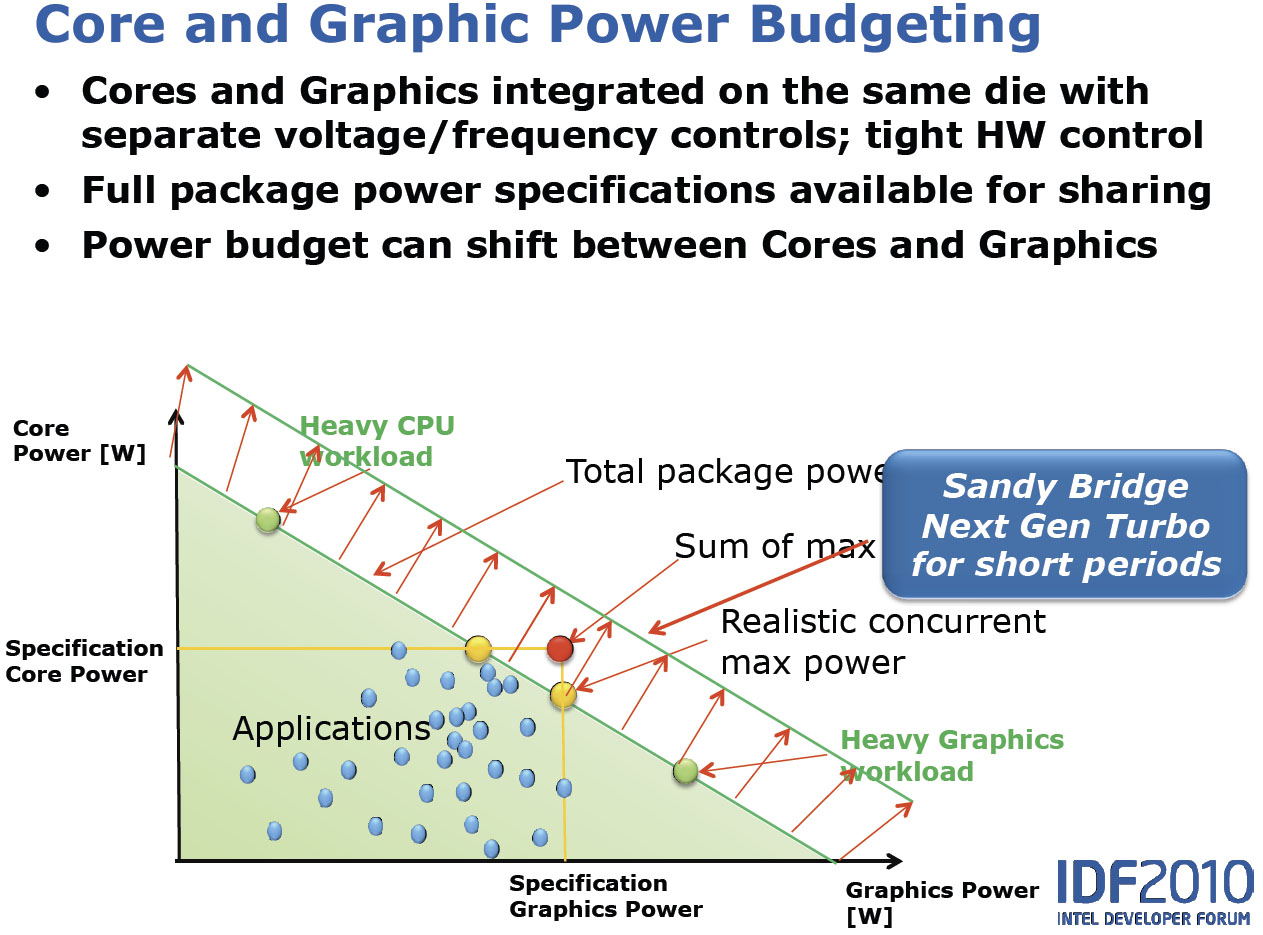Intel’s Second-Gen Core CPUs: The Sandy Bridge Review
Although the processing cores in Intel’s Sandy Bridge architecture are decidedly similar to Nehalem, the integration of on-die graphics and a ring bus improves performance for mainstream users. Intel’s Quick Sync is this design’s secret weapon, though.
The System Agent And Turbo Boost 2.0
The System Agent
Altered principally in name, the system agent includes functionality previously associated with the uncore—that is, it includes the processor subsystems that can’t be grouped with the execution cores (and now the graphics engine, too).
In that list, you have the dual-channel memory controller (which officially supports transfer rates of up to 1333 MT/s), 16 lanes of second-generation PCI Express connectivity, the DMI, and a more advanced power control unit, responsible for managing the operation of Turbo Boost, among its other roles.
Turbo Boost 2.0?
Speaking of Turbo Boost, Sandy Bridge includes a second-generation implementation of this technology, first seen two years ago on Bloomfield-based Core i7-900-series chips, but really only throttled up, so to speak, on Lynnfield a year later.
The premise behind what I’ll call Turbo Boost 1.0 was that, in a multi-core CPU, available resources are not always in use. An application like iTunes, for instance, can only use one core at a time. And yet, the chip’s thermal ceiling is defined by a worst-case scenario of all cores fully-utilized. Turbo Boost takes advantage of the thermal headroom that exists when the chip executes a workload like iTunes, in turn accelerating the one active core to get its task completed faster.
Turbo Boost 1.0 is smart in that it dynamically ratchets up the frequency of active cores based on temperature, current, power consumption, and operating system states. But it won’t exceed programmed power limits, even if thermal headroom exists to push performance harder.
Get Tom's Hardware's best news and in-depth reviews, straight to your inbox.
In the real-world, a processor doesn’t heat up right away, though. From idle, it takes time to reach its thermal ceiling. Turbo Boost 2.0 (or next-gen Turbo Boost, whatever you want to call it) allows the processor to exceed its power ceiling until it reaches its thermal limit, at which point it drops power to conform to those same programmed limits.
Turbo Boost 2.0 does not mean the CPU will exceed its maximum Turbo Boost frequency. If you have a Core i7-2600K with a 3.4 GHz base clock and 3.8 GHz maximum Turbo clock, 3.8 is as fast as it’ll go in its stock trim. It’ll simply stay there longer—until the CPU heats up to its thermal limit—before backing down.
Unfortunately, it’s not really possible to quantify the benefits of this capability. The best I could get out of Intel was that it helped improve responsiveness. On the desktop, I frankly wasn’t able to tell a difference, and as a result, Turbo Boost 2.0 comes across somewhat gimmicky.
To be fair, it’s going to mean more in the mobile space, where base clocks start off a lot lower to save power, and Turbo Boost ceilings scale significantly higher. We have a Sandy Bridge-based notebook in the office and will be putting it through its pages this month, too.
Also more impactful in the mobile space is Sandy Bridge’s ability to share thermal budget between graphics and processor cores. Previous-generation Arrandale cores were able to do this, applying the Turbo Boost concept to both components. Now Sandy Bridge enables the same capability on the desktop. Intel says that, in 3D-heavy workloads, the power control unit will bias to the graphics core, as it stands to improve performance more than faster CPU cores.
Current page: The System Agent And Turbo Boost 2.0
Prev Page Inside Of Sandy Bridge: Cores And Cache Next Page Sandy Bridge’s Secret Weapon: Quick Sync-
cangelini MoneyFace pEditor, page 10 has mistakes. Its LGA1155, not LGA1555.Reply
Fixed, thanks Money! -
juncture "an unlocked Sandy Bridge chip for $11 extra is actually pretty damn sexy."Reply
i think the author's saying he's a sexually active cyberphile -
fakie Contest is limited to residents of the USA (excluding Rhode Island) 18 years of age and older.Reply
Everytime there's a new contest, I see this line. =( -
englandr753 Great article guys. Glad to see you got your hands on those beauties. I look forward to you doing the same type of review with bulldozer. =DReply -
joytech22 Wow Intel owns when it came to converting video, beating out much faster dedicated solutions, which was strange but still awesome.Reply
I don't know how AMD's going to fare but i hope their new architecture will at least compete with these CPU's, because for a few years now AMD has been at least a generation worth of speed behind Intel.
Also Intel's IGP's are finally gaining some ground in the games department. -
cangelini fakieContest is limited to residents of the USA (excluding Rhode Island) 18 years of age and older.Everytime there's a new contest, I see this line. =(Reply
I really wish this weren't the case fakie--and I'm very sorry it is. We're unfortunately subject to the will of the finance folks and the government, who make it hard to give things away without significant tax ramifications. I know that's of little consolation, but that's the reason :(
Best,
Chris -
LuckyDucky7 "It’s the value-oriented buyers with processor budgets between $100 and $150 (where AMD offers some of its best deals) who get screwed."Reply
I believe that says it all. Sorry, Intel, your new architecture may be excellent, but unless the i3-2100 series outperforms anything AMD can offer at the same price range WHILE OVERCLOCKED, you will see none of my desktop dollars.
That is all.



